Warning: The following contains spoilers for Dragon Age: Origins, Dragon Age: Awakening and Dragon Age II. Reader discretion is advised.
Bioware has made some of the most iconic and memorable role playing games in the history of gaming. Titles that raised the bar for storytelling, interaction, and an incredible depth of character development. Their worlds feel compelling, alive, and most of all, complete. However, they are also for the most part, decidedly linear. This makes Dragon Age: Inquisition Bioware’s most ambitious, and thus their most dangerous game yet.
Bioware’s first RPG was their Infinity-engine powered title Baldur’s Gate. Sporting a freshly-acquired D&D license, the game gave players full control over their character’s class, race, and even their origin story – a staple of Bioware games from that point forward. Stretching over 80 hours for completionists, with the main quest being easily more than a dozen of it, it also featured an incredible twist – your character is the son of the Dead God Bhaal. Baldur’s Gate wears a proud crown in the Top 10 RPGs of all time of nearly any site, and the trademark unpredictable and compelling interactions have become a hallmark of Bioware titles to this day.

The next title from the Edmonton-based developer (after the Tales of the Sword Coast expansion for Baldur’s Gate) was a return to their action roots – MDK2. A follow-up to Shiny’s bizarrely-awesome shooter, MDK2 was released to solid scores, but fans clamored for more of the magical RPG world of Baldur’s Gate – and they delivered what is arguably one of, if not the, best RPG of all time.
Baldur’s Gate II: Shadows of Amn and its expansion Throne of Bhaal took everything that its predecessor did and absolutely polished it to absolute perfection. Compelling characters, a fantastic villain (complete with twist!), and more content than any five games released at this time combined come together to win spots on nearly every publication’s game of the year, and about as many best RPG of all time lists.

By this point Bioware had clearly mastered whatever secret sauce was needed to make incredible role playing games because their next titles were, in order, Neverwinter Nights (and its two expansions), Star Wars: Knights of the Old Republic, Jade Empire, and then Mass Effect. If you are reading this, I suspect you own most if not all of those titles. If you’re like me, you probably own them on multiple platforms. After a quick juke in an odd direction with Sonic Chronicles: The Dark Brotherhood, they jumped back into the RPG world with Dragon Age: Origins, Mass Effect 2, and then Dragon Age: Origins – Awakening. After a 14 year string of amazing games, it seemed like they could do no wrong.

In 2011, Bioware released Dragon Age II and Star Wars: The Old Republic. These two titles represented the first time that Bioware decided to take a less linear approach towards their games, the latter being a full MMO experience for players to embrace. Both titles received relatively decent reviews, but both also received some hard but fair criticism. Dragon Age II tried for a more open world than its predecessor, allowing players to flip between three panels to choose which story mission to tackle next, but repetition of the same areas over three acts felt like a big step backwards from the very complete worlds that came before. Players also lamented the loss of the more tactical approach to combat in favor of an action-heavy system. While simpler and likely aimed to bring in a more casual RPG audience, the system didn’t have the same pause and assault approach as Origins. Also, players were given only a human refugee as an origin story, somewhat of a step backwards to the multicultural approach of its predecessor. While the game did well, these aspects left players feeling like this sequel was rushed to market.

The Old Republic, Bioware’s first and only MMORPG, was an incredible undertaking. Spawning an entirely new studio in Austin, Texas, SWTOR represented a chance to return to the incredible battle between the Sith and Jedi. In practice, each of the character classes in the game were supported by fantastic voice acting, full fledged and intricate storylines, and provided single-player-centric players with an incredible experience. Unfortunately, the game launched without a great deal of PvP support, incomplete endgame content after you finished your single-player story, and a rapidly shrinking MMO market. Shifting to a hybrid free-to-play / subscription model has righted the ship, giving us two expansion packs and two more on the horizon allowing the game to thrive now three years later.
Mass Effect 3 spelled the culmination of well over 100 hours of decisions and character interactions. Shepard has taken the fight to Harbinger and the Reapers, giving the player three choices of how to handle the Reaper menace. The problem is that, despite a fantastic run to this point, it seemed like Bioware had no idea how to tie it all up with a bow. The endings felt hollow, with hundreds of player choices boiled down to just a few slides. Outrage lead Bioware to release a free update offering an Extended Cut of the ending, closing some plot point vagueries, adding a few interactions to help bridge the new ending, and even a fourth ending to the mix. To many, it still felt like it was tacked on but it served to balance out what many believed was a fairly weak ending to a strong series.

So what’s the problem?
Put simply, Bioware is at a pivotal stage. Founders Dr. Ray Muzyka and Dr. Greg Zeschuk departed the company, announcing their departure just one day after the announcement of Dragon Age: Inquisition on September 18th, 2012. Veteran Creative Director Mike Laidlaw, Writer David Gaider, and Executive Producer Mark Darrah have built some of the best games I’ve ever played in approaching 40 years of playing games. But could this trio, flanked by some of the best designers, coders, and world-creators in the industry crack the admittedly rough patch of the last three years?
Dragon Age: Inquisition is the most ambitious, and thus most dangerous game that the team has designed to date. The game will feature an open world, something Bioware has never done. Dragon Age: Inquisition is set on the continent of Thedas and has been repeatedly reported that a single map is more than five times the size of the entire first title in the series. Open worlds can feel aimless and empty if there isn’t enough content to bring the world alive – something that left us with repeating areas as filler in Dragon Age II. The worst offense, however, is that in the end players were given little choice in how Dragon Age II ended. Orsino dies, Meredith dies, and the choices you made leading to the end are completely obliterated by the actions of Anders, no matter what you may do to try to stop it. Unlike the Mass Effect series, or Knights of the Old Republic where players could truly shift the outcome, Dragon Age II has a fixed outcome regardless.

Covering the lands of Orlais and Ferelden with the Dales in between, this area will set the stage for the unfolding war between the Templar Order which has seceded from the Chantry that once gave it some measure of control, and the Circle of Magi which the Templars believe perpetrated the destruction of the Kirkwall Chantry and the assassination of Grand Cleric Elthina. Right or wrong, this has triggered a civil war between the two factions, leaving you to once again pick sides. This game is supposed to take into consideration every decision made in the last two games and their expansion packs – something that left us with poorly summed-up decision ‘slides’ at the end of Mass Effect 3.

Inquisition will also attempt to blend the pause-and-play tactical approach of Dragon Age: Origins with the aggressive combat of Dragon Age II, attempting to please both audiences with one control scheme. This type of blend has not been done in a single game as Bioware separated the two control sets customizing it for PC or consoles, respectively, for Dragon Age: Origins.
With Dragon Age: Inquisition coming in less than 90 days, it’s a lot of new ground to cover. Should you be worried?
Absolutely not.
Though nobody has gotten a chance to simply run wild in the world of Dragon Age: Inquisition yet, many trade show demonstrations have given us literally hours of content to pore over to safely suggest that they’ve not only populated, but heavily populated their game space. During certain demos a Skyrim-like HUD was shown suggesting players could have a semi-guided experience to discover the world around them without forcing them down a linear path. Recently the team confirmed that enemies do not scale, suggesting you are free to tackle monsters far sooner than you should – a true open world experience. Thankfully, the team has also confirmed that they will no longer reuse environments, ensuring that each area is completely unique from the last. While the areas are significantly larger, this is necessary as your Inquisition will now have to capture and occupy structures to expand the power of your chosen faction. During the E3 demo, Laidlaw and his team stated that even the creatures that roam the area will be impacted by the decisions of your group, and that you could even hunt specific animals out of existence if you aren’t careful with the fragile ecosystem. Every time we see the game it becomes more and more clear that the Bioware team has thought long and hard about how to fill the environment to the brim.

I’m among the group that felt a bit let down by the ending of Mass Effect 3. I felt like it was buttoned up in a rather generic fashion, and I felt like hundreds of hours of decisions simply didn’t matter in the end. It felt like the team simply forgot all of the powerful moments in the previous two titles. I’m hopeful that Dragon Age: Inquisition doesn’t suffer from this problem, and that comes courtesy of some recently leaked information regarding the Dragon Age Keep. As you can see below the team has taken into account the great wealth of possible permutations from Dragon Age: Origins and Dragon Age II. There are even decisions I’d forgotten, and I’ve played through both titles multiple times! While Dragon Age Keep was meant to help users transition from PC or previous-gen consoles to their newest platform of choice, it also demonstrates a clear and conscious decision to ensure every choice matters.
The controls in Dragon Age: Inquisition are actually the least of my worries. The pause-and-play tactical combat was occasionally very clunky in Origins (don’t believe me? play it again…) and most players would simply directly control the character they needed at the time. While I do agree that Dragon Age II’s combat was too far in the ‘arcade’ direction, this new blended approach looks better every time we’ve seen it. The extra horsepower of new platforms has allowed a more robust control system, allowing players to issue standing orders like having a tank create a chokehold, or having a mage stay out of the fray to lob fire from afar. The team has done both types of controls in the past, so combining them with a bit more juice under the hood of the new Frostbite 3 engine should allow them to fold them together nicely.

So what about that trademark twist?
Today, Mike Laidlaw casually tossed out some information regarding the oft-rumored multiplayer component for Dragon Age: Inquisition. With a nod to the lessons learned in Mass Effect 3, the game will feature three 4-player dungeon campaigns, each segmented into smaller sections built from several pre-designed areas. These areas, to scrub the idea of repetition from our thoughts, will be heavily randomized with a large pool of enemy, loot, layouts, and objectives from which to build an expansive new mode. Each class has unique powers that may help you move through an area, or may restrict you if you’ve picked another option. For instance, a locked door wouldn’t bar a thief, and a crumbling wall would be no match for a Qunari warrior. The multiplayer will feature 12 heroes and ten areas at launch, but the team has also revealed that the entire mode will be free. Best of all, the DLC that comes after this point will also be free. This means new levels and heroes, more loot and foes, and undoubtedly plenty of surprises – this is Bioware after all. Here’s a nibble courtesy of the team:
The loot collected in Dragon Age: Inquisition’s multiplayer will allow players to purchase equipment, recipes, crafting materials and more for their multiplayer hero. Additionally, you’ll pick up additional heroes, skins, and abilities as your multiplayer hero levels up. Just like in Mass Effect 3, there will be a pay option to accelerate your character’s progression using “Platinum” – a premium currency you can buy with real money. That said, there will be nothing behind a paywall, so players who spend the time can earn each and every item, skill, and unlock. The single player and multiplayer modes will not intersect in any way, so you won’t carry your gear from one to the other. This also means that you do not have to play multiplayer to complete every aspect of the single player experience. You can read what Bioware has revealed thus far at their official FAQ.

Though Dragon Age: Inquisition may spell the most ambitious game the company has created to date, it also marks the dawn of a new age. Fresh hardware has hit the market and has had a full year to mature. PCs are more powerful and cheaper than they ever have been, with large amounts of memory available to both platforms. Dragon Age II spent less than two years in development which clearly hurt the end result, but Inquisition has had nearly double that time to bake. Dragon Age Keep shows a hefty amount of effort in taking into account the decisions of the past, but we can only hope that the ending sums up it nicely. I, for one, am not worried though. While the good Doctors may be gone, the age of Laidlaw, Darrah, and others have just begun.
Dragon Age: Inquisition will ship for PlayStation 3, PlayStation 4, Xbox 360, Xbox One, and PC on November 18th.
Ron Burke is the Editor in Chief for Gaming Trend. Currently living in Fort Worth, Texas, Ron is an old-school gamer who enjoys CRPGs, action/adventure, platformers, music games, and has recently gotten into tabletop gaming.
Ron is also a fourth degree black belt, with a Master's rank in Matsumura Seito Shōrin-ryū, Moo Duk Kwan Tang Soo Do, Universal Tang Soo Do Alliance, and International Tang Soo Do Federation. He also holds ranks in several other styles in his search to be a well-rounded fighter.
Ron has been married to Gaming Trend Editor, Laura Burke, for 28 years. They have three dogs - Pazuzu (Irish Terrier), Atë, and Calliope (both Australian Kelpie/Pit Bull mixes), and an Axolotl named Dagon!


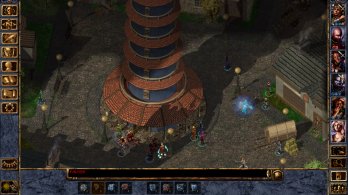

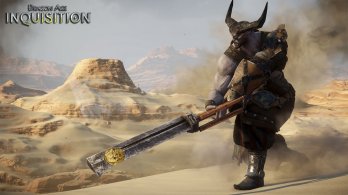

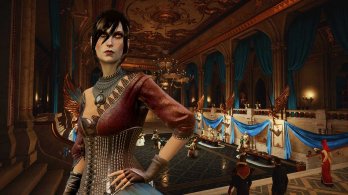

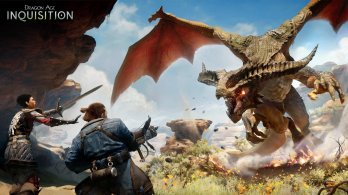
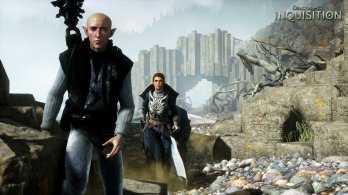

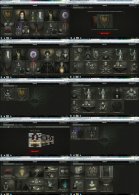
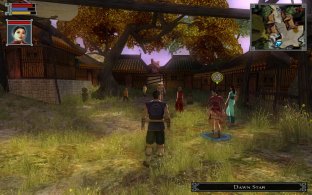




 Buy Now
Buy Now
 Buy Now
Buy Now
 Buy Now
Buy Now
 Buy Now
Buy Now
 Buy Now
Buy Now
 Buy Now
Buy Now















